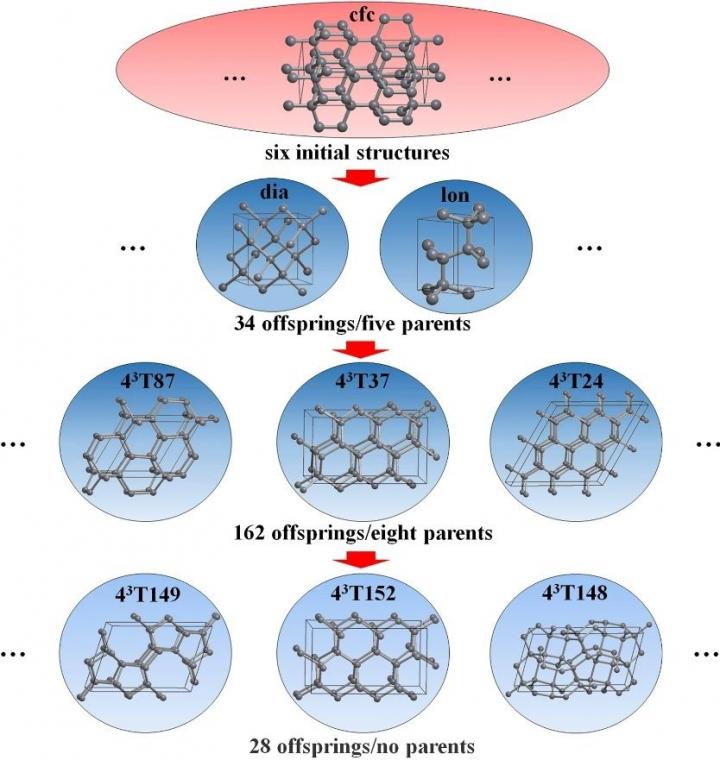One of the predicted substances turned out to be harder than a diamond

Credit: @SamaraPolytech
Employees of the Samara Center for Theoretical Materials Science (SCTMS) of Samara Polytech together with scientists of Northwestern Polytechnical University (NPU, China) generated low-energy carbon allotropes, i.e. substances of the same composition as the known allotropes, such as graphite or diamond, but different in structure and properties. The search for new carbon allotropes is a global trend, as they can become new materials with many useful properties, primarily with extremely high hardness and wear resistance. The results of these studies are published in the journal npj Computational Materials, published by Nature Publishing Group, that is one of the most prestigious scientific journals in the field of theoretical materials science.
There are infinitely many variants of atomic configurations, and the topological approach, which is implemented by the SCTMS employees in the ToposPro software package, allows to choose only those that have the required properties. This helped scientists discover 224 previously unknown allotropes of carbon with crystal lattice energy close to that of a diamond. The authors calculated the mechanical properties of the generated allotropes and found simple relationships between the density of the allotrope and its most important mechanical properties, such as bulk and shear moduli that determine the substance hardness. As a result, an allotrope was found, the hardness of which is higher than the hardness of a diamond.
“This is a really important research , professor Vladislav Blatov, the director of the center says. “We’ve taken another step in predicting superhard materials. Among the carbon allotropes we have modeled, there are other interesting structures, and now it is important for us to understand which particular features of their structure are responsible for the high substance hardness. We hope that the found patterns will make it possible to purposefully simulate other materials with extreme mechanical properties. Research is carried out within the framework of a cooperation agreement between Samara Polytech and Northwestern Polytechnical University, and I am glad that our cooperation is bearing real fruit.
###
For reference:
Samara Center for Theoretical Materials Science (SCTMS) was organized in 2013; the center has been operating on the basis of Samara Polytech since 2018. Among the directions of SCTMS work are the software development for new materials modeling and intelligent analysis of experimental data; development of a new generation of electronic databases for heuristic prediction of the physical properties of solids; development of an expert system for the effective search for materials with specified properties; organization of a computer center for solids calculation by quantum mechanical methods; organization of schools, workshops, seminars on theoretical materials science.
Samara Polytech as a flagship university offers a wide range of education and research programs and aims at development and transfer of high-quality and practically-oriented knowledge. The university has an established reputation in technical developments and focuses on quality education, scientific and pragmatic research, combining theory and practice in the leading regional businesses and enterprises. Education is conducted in 30 integrated groups of specialties and areas of training (about 200 degree programs including bachelor, master programs and 55 PhD programs) such as oil and gas, chemistry and petrochemistry, mechanics and energy, transportation, food production, defense, IT, mechanical and automotive engineering, engineering systems administration and automation, material science and metallurgy, biotechnology, industrial ecology, architecture, civil engineering and design, etc.
npj – Nature Partner Journals. The project Nature Research started in 2014 and is directed to the publication of high quality research in open access. The npj journal portfolio includes the whole scope of researches from fundamental physics to medicine. Npj Computational Materials is a journal with the highest ratings in the field of computer modeling of materials.
Media Contact
Roman Naumov
[email protected]




